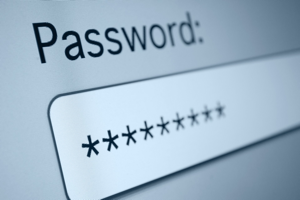When you create an account on the internet, such as for a game or a school website, you must choose a password. This password acts as a secret key that protects your account and the information inside it. It ensures that only you can access your account, keeping your personal details safe from others.
Passwords are essential because they prevent unauthorised people from entering your accounts. If someone else guesses or discovers your password, they could view your private information, send messages pretending to be you, or even change your account settings. Therefore, it is crucial to select a strong password that is difficult for others to guess.
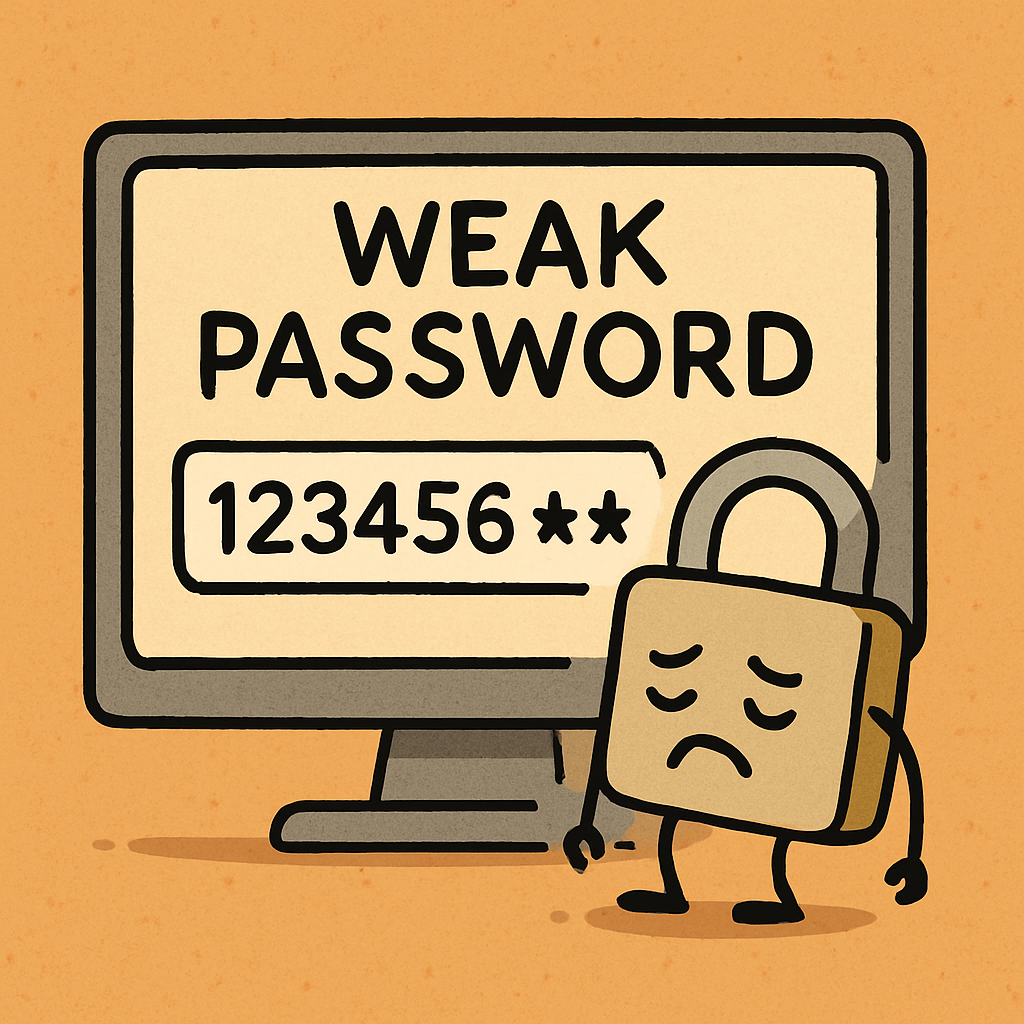 Understanding Weak Passwords
Understanding Weak PasswordsA weak password is one that can be easily guessed or discovered by others. This makes your online accounts vulnerable to unauthorised access. It is important to recognise what makes a password weak so that you can avoid using them.
Here are some common examples of weak passwords and why they are not secure:
These passwords are weak because they are straightforward and do not require much effort to crack. Always avoid using weak passwords to keep your accounts safe and secure.
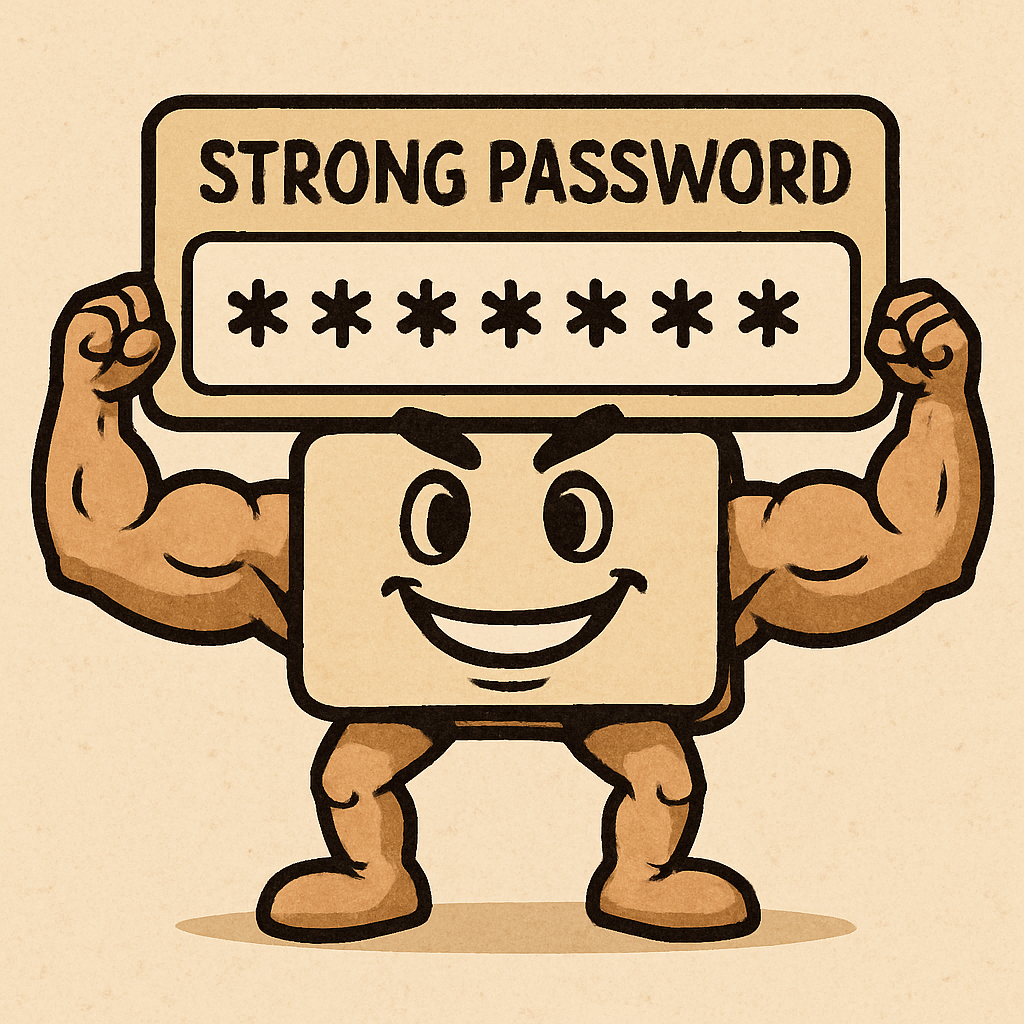 Understanding Strong Passwords
Understanding Strong PasswordsA strong password is designed to be very difficult for others to guess or discover. This helps to protect your online accounts from unauthorised access. It is important to learn what makes a password strong so that you can create secure ones for yourself.
Here are some examples of strong passwords and why they are secure:
These passwords are strong because they use a combination of different types of characters and are not based on simple words or personal information. By following these guidelines, you can create passwords that keep your accounts safe.
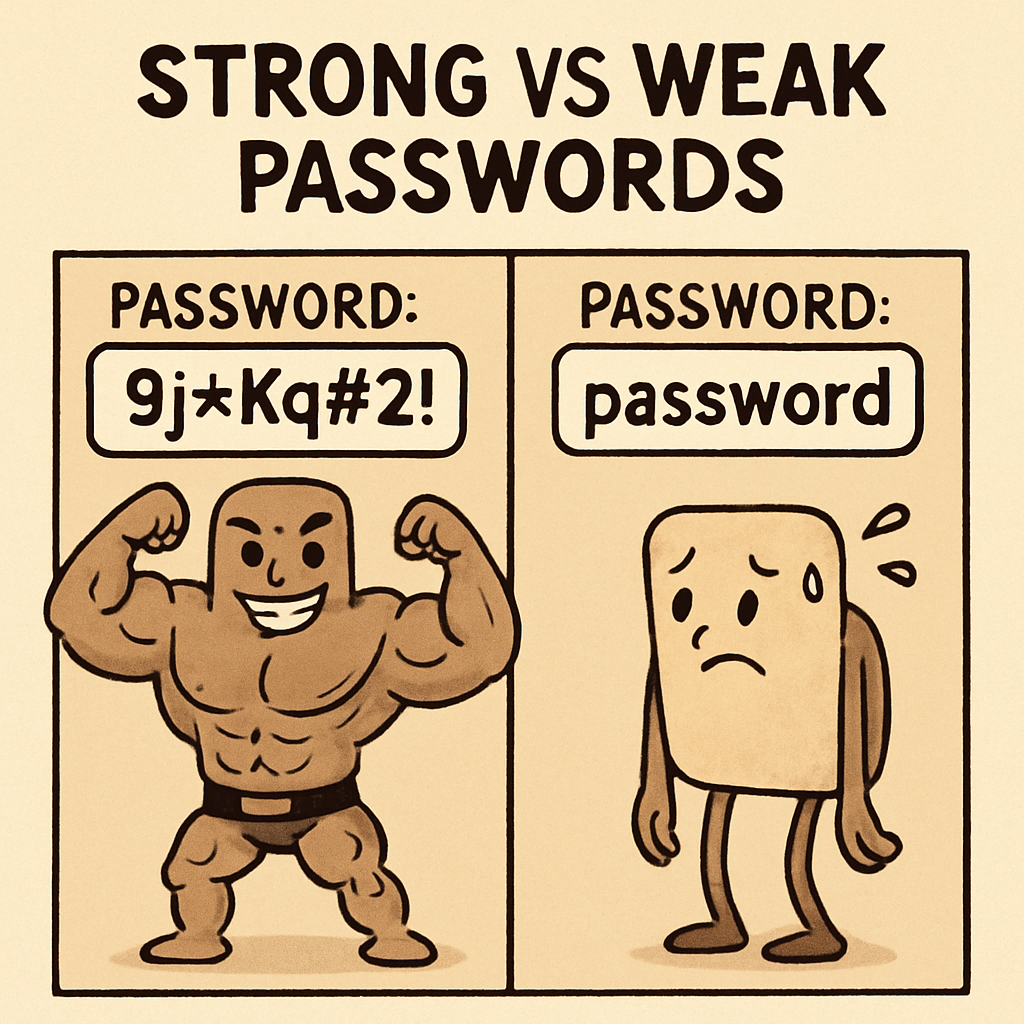 Strong vs Weak Passwords
Strong vs Weak PasswordsNow it is time to test what you have learned! Below are some passwords. For each one, decide if it is weak or strong by clicking the button. You will get feedback to see if you are right, and why.
Remember: Weak passwords are easy to guess, like simple words or numbers. Strong passwords are long, with a mix of letters, numbers, and special characters.
Password: 123456
Password: password
Password: BlueSky!23
Password: abc123
Password: HappyDog#456
Password: letmein
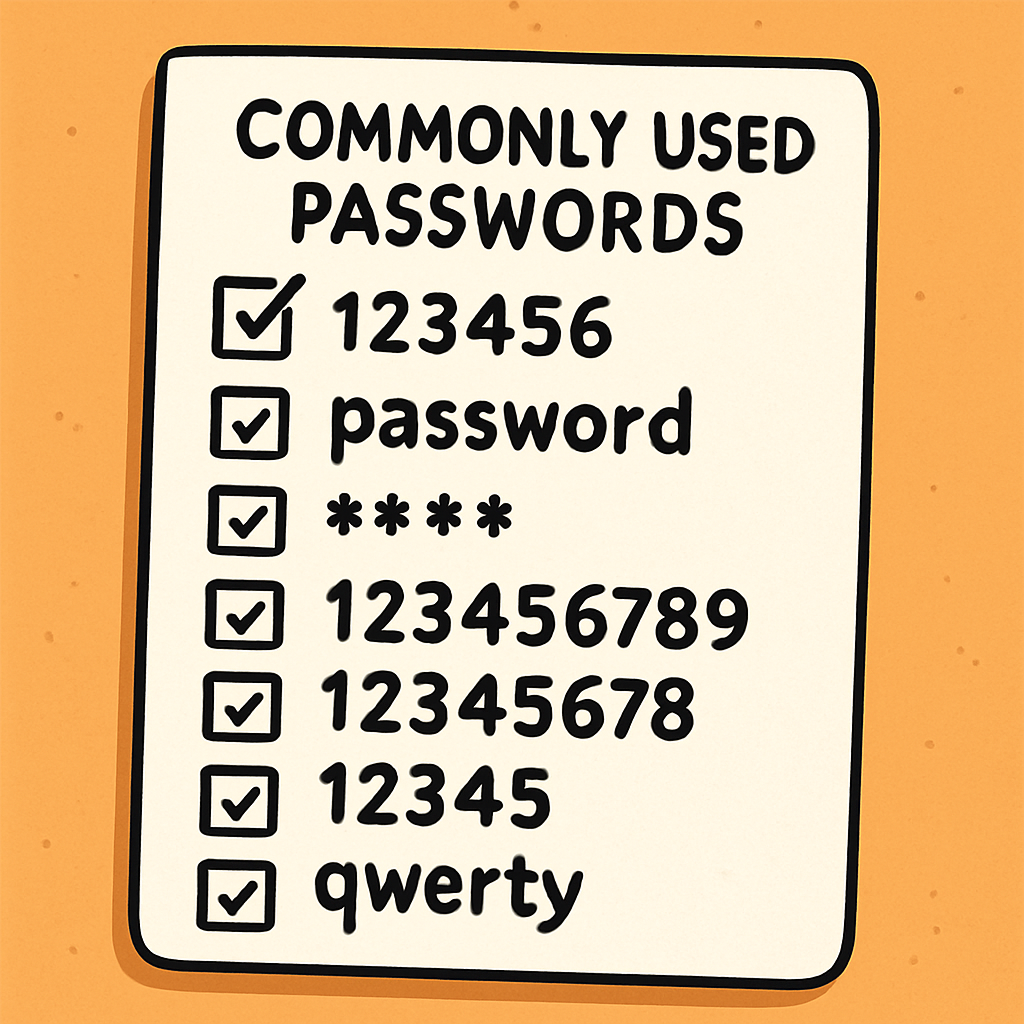 Commonly Used Passwords to Avoid
Commonly Used Passwords to AvoidMany people choose simple passwords because they are easy to remember. However, these common passwords are well-known to hackers, who try them first when attempting to access accounts. Using such passwords can put your online security at risk.
These passwords are frequently used by many individuals, making them easy for hackers to guess. To protect your accounts, it is important to create unique passwords that are not on this list.
Here are some of the most commonly used passwords. Avoid using them and create something more secure instead.
Although these passwords may seem convenient, they are not strong enough to protect against unauthorised access.
